LYSFANGA: The Time-Shift Warrior
POST MORTEM
5 min read

Technical sheet
Release: February 2024 (PC, Nintendo Switch)
Metacritic: 74 | Steam user score: 76%
Team of 20+, Unity Engine.
Developed by Sand Door Studio, Edited by Quantic Dream Spotlight.
The game was adapted from an award-winning student game (Pégases 2022 - best student game)
God is a Geek (80): "Lysfanga The Time Shift Warrior delivers fun, creative action-adventure with enough charm and new ideas to stand out."
My role
Integrated cinematics and narrative content in Unity Engine.
Wrote non-dialog elements (journal entries)
Rearranged and redesigned existing story beats, fusing some together and adding new ones for higher emotional peaks, better pacing and information delivery.
Brought character voices to life and oversaw voice recording sessions.
Wrote dialogs
Had ownership of designing new narrative content for a whole area of the game.
Organized new work pipelines to collaborate and communicate with other teams.
Design new narrative systems to boost engagement in post-game content and exploration based on ongoing player research and feedback.
Collaborated with external teams from our editor, localization QA, voice recording, and others.
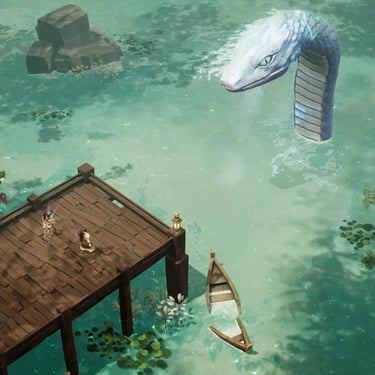
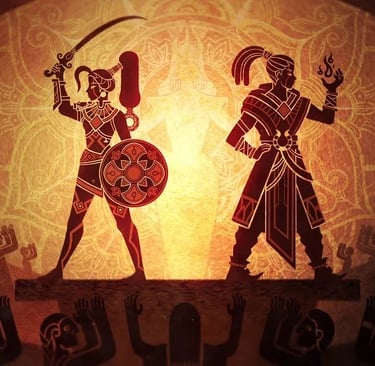
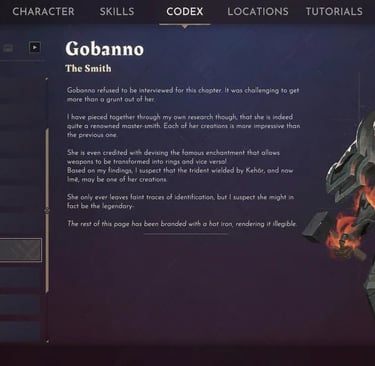
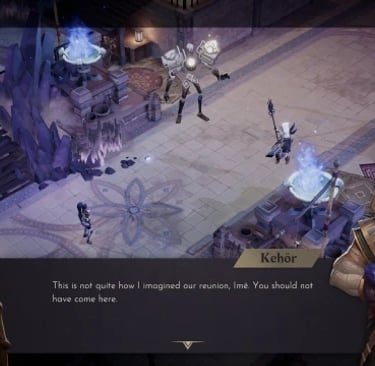
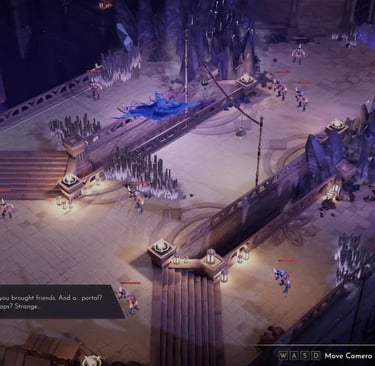
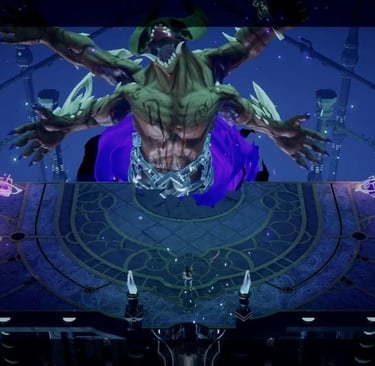
Growing responsibilities: I arrived on Lysfanga mid-production initially as a technical narrative designer to implement narrative content and polish the overall narrative experience.
Very quickly I took over more responsibilities from the previous external narrative team, becoming the main dialog writer and story designer.
In the end I had ownership of all narrative content, leading a cinematics team with one animator, one VFX artist, and one assistant designer, in collaboration with tools programmers and the game director.
Challenges
Lack of pre-production before I arrived: The project had no proper pre-production phase when leaping from award-winning student game to full experience. Especially the narrative part suffered from a lack of attention, as it was initially something the Game Director wanted to handle himself. He hired me to take over when he realized he had no sufficient time for it and the collaboration with the external narrative team wasn't clicking together.
Time and budget constraints: I was initially told the game was coming out in 5 months when the narrative had almost nothing yet designed or implemented. In the end I stayed for 1 year and the game came out a few months later, but I worked with the constant constraint of having to put minimal additional work on artists and programmers when designing narrative content.
The story is not the main focus: As an action-focused game, story content had to be minimal yet efficient. I learned a lot about identifying critical information and delivering secondary content in digestible ways respectful of player agency.
Limited tools: With a limited team-size, we had no dedicated tools programmer (our Programming Lead was the cinematics tools programmer and build master, stretching his resources thin). With no way to previsualize animations or camera movements during integration, I had to develop a very methodical and rigorous workflow to waste as little time as possible.
Frequent external changes: I had to adapt the narrative delivery and reintegrate content frequently following level design and tools changes, adding stress to the time budget.
Mostly junior team and working remotely: Most of the team worked in the same physical space while I worked remotely. From a distance, critical information sometimes failed to reach me, and organization seemed opaque. I realized I needed to step up to fulfil my own production needs and organized with other collaborators to build more robust workflows.
Approach
Technical:
Documentation: I quickly reorganised the project's documentation (initially a g-slide document) into a robust database of shareable overviews, detailed game elements, production sheets and content review templates.
Tools: Familiarized myself with the in-house tools and wrote implementation guides to have a robust resource to fall back to for rare cases and debugging.
Production: Performed debugging on a daily basis. Tracked my production progress and practised self-reviews regularly to be aware of the state of the game and areas in need of polish.
Communication: I shared my vision with the team at key moments with polished presentation documents and a video script reading of Act 1 to validate character voices and overall tone.
Scope: I worked in a way to pre-emptively adapt to cut content, knowing that budget was tight and design changes were frequent. I raised orange flags regularly until I had to decide which parts of the narrative experience needed to be rescoped or cut.
Design:
Pacing: I planned out pacing curves to tell emotional stories and distribute story beats based on their intensity. I found it especially important to create appropriate build-up and fuse multiple story-beats together for higher emotional peaks and efficiency.
Case study: The Coliseum of Balara, early Act 2.
Analysis: When I started on the project and looked at the level design map, I realized that early Act 2 was really low in narrative content and story beats were being spaced out without much in thought of emotional setup or payoff.
Design approach: The initial low-density of content was turned into intentionally subtle cues of creeping intensity, culminating into one explosive reveal (and prolonged high intensity gameplay in the Coliseum), leading to a a slow intensity fall-off of major and minor payoffs and setups of new plots.

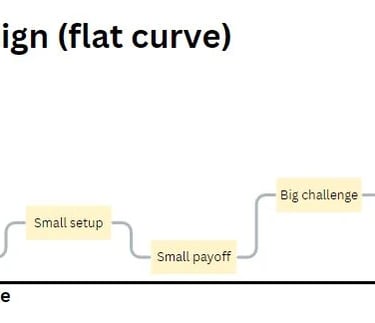

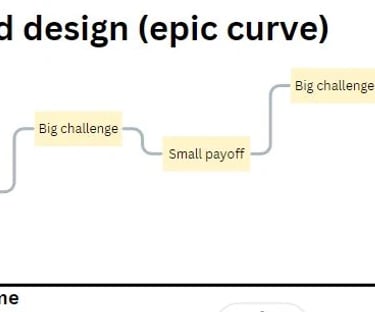
Emotional diversity: One thing I don't particularly enjoy in some narrative games is the mono-tone, when everything feels a bit like the same shade of depression or satire. I find it more rewarding for story engagement and exploration to diversify voices and situations.
Design approach: I used archetypes from alchemy and astrology to give a different voice to all main and secondary characters. For example, all of the golems (shop-keepers and helpers) are based on planetary energies (Sun, Venus, Mars...), creating natural strengths and weaknesses, fluid alliances and enmities depending on the topic of conversation, and unique voices for each.
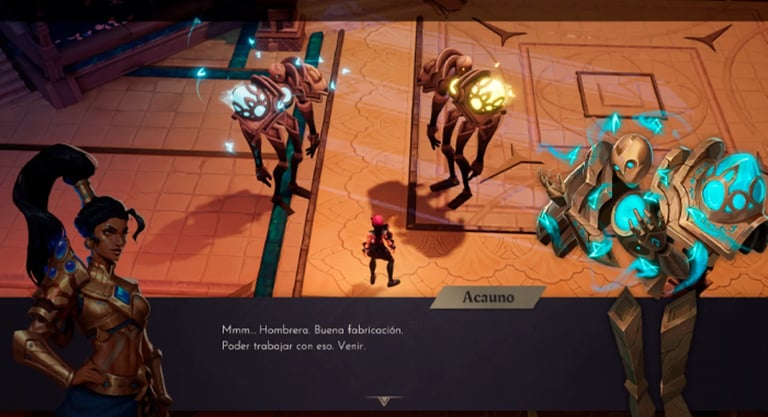

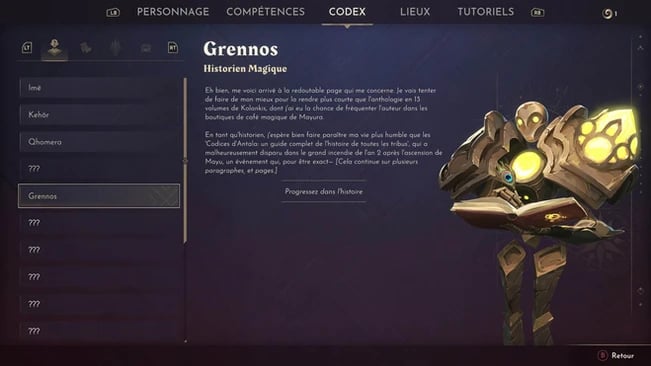


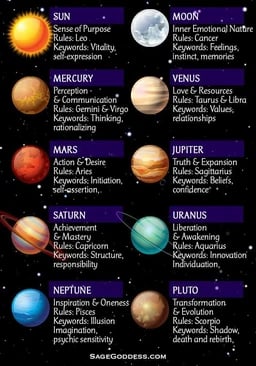
Each Golem's personality was based on a planetary archetype to differentiate them.
Post-Mortem
Rich experience: Overall, I appreciate the opportunity for high responsibility and lessons in leadership I learned from being the main narrative designer on the team.
It all worked out: Despite a lukewarm reception of the story, we were happy to deliver a complete and mostly bug-free narrative experience. Some users reportedly enjoy the personality of the main and supporting characters, and the worldbuilding.
Mark of confidence from the director: The game director shared with me the best reviewed parts of the narrative were the ones I had mostly done alone (post-game content and journal entries), and he wished he had let me restart the narrative from scratch when I arrived instead of building upon what had already been done.
Connect
Let's collaborate on your next game design project:
damien.f.rodriguez@gmail.com
© 2025. All rights reserved.